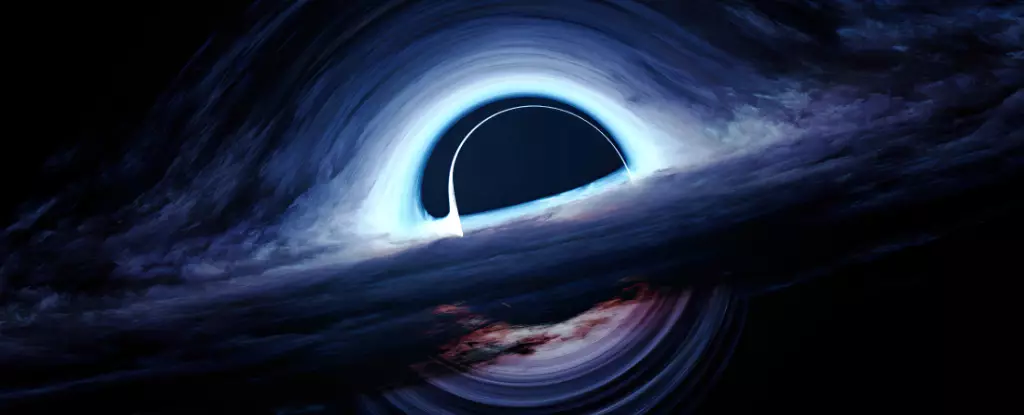Astounding in both scale and significance, supermassive black holes (SMBHs) command a unique position in the cosmos. With masses that can reach up to one billion times that of our Sun, their presence raises profound questions about their origins, growth, and the very nature of our universe. Recent scientific inquiries into these celestial giants reveal their existence at a much earlier stage in cosmic history than previously thought, posing challenges and prompting novel hypotheses regarding their formation.
Astronomers have made groundbreaking discoveries, identifying quasars—luminous entities powered by rapidly accreting supermassive black holes—which existed when the universe was less than a billion years old. This early emergence has sparked interest and intrigue, as it raises critical questions: How could such massive objects form in a seemingly brief cosmic timescale? The existing frameworks of black hole formation suggest that, under normal circumstances, they require considerable time and material to evolve into the titans we observe today.
The conundrum lies in the mechanism of growth. Black holes absorb surrounding gas, dust, and stars through a phenomenon known as accretion. This process generates immense radiation and energy, which ultimately imposes restrictions on their growth rate. The discovery of early quasars suggests that these supermassive black holes either experienced rapid growth beyond established norms or originated with significant mass from the outset, prompting the scientific community to search for more plausible explanations.
To explain the formation of supermassive black holes, various theories have been proposed. One prominent theory is the existence of primordial black holes, which are theorized to have formed in the aftermath of the Big Bang. However, while this model may account for the formation of smaller black holes, it fails to adequately explain the presence of the massive black holes observed in early galaxies.
Alternatively, the collapse of massive stars—particularly those in dense stellar clusters—can facilitate black hole formation. According to this model, these smaller, “stellar mass seeds” may be capable of accelerating their growth rate by merging with other stars and black holes in their environment. Nonetheless, this depends on the availability of sufficient stellar material and a conducive environment.
An even more intriguing hypothesis posits that supermassive black holes could emerge from “heavy seeds.” This model envisions a scenario where direct collapse results in massive black holes forming from the gravitational aggregation of gas clouds, confined by dark matter. During this process, it is proposed that the intense pressure prevents the gas from igniting into stars, allowing these seeds to accumulate considerable mass instead.
Establishing a clearer census of early black holes has proved challenging. While advances in telescope technology have illuminated aspects of the early universe, tracking black holes effectively has been a different undertaking altogether. Many early quasars could only be identified due to their extraordinary luminosity, making it difficult to glean a comprehensive picture of the overall population of black holes.
Recent investigations have begun to alter this narrative. A meticulous monitoring project spanning over 15 years focused on the brightness fluctuations of early galaxies has yielded surprising data. The findings suggest that there are far more black holes lurking in the cosmos than previously estimated, a revelation corroborated by the advanced capabilities of the James Webb Space Telescope (JWST). As discoveries unfold, it is apparent that the universe contains far more black holes than conventional models can account for.
In recent years, the field of black hole research has undergone a seismic shift, advancing our understanding of their origins and roles in cosmic evolution. Emerging observational platforms, such as the upcoming Euclid mission and the Nancy Grace Roman Space Telescope, promise to enhance our census of faint quasars and help parse the complex processes surrounding black hole formation.
Among the innovations, the JWST stands out. Its unprecedented sensitivity enables it to monitor faint black hole activity, offering the potential to capture high-resolution images of black holes in action. In the coming five years, astronomers anticipate making significant strides in understanding the population of black holes as they manifest during the formation of the first galaxies. By witnessing the explosive aftermath of early stellar collapses, the research community stands poised to answer lingering questions about how supermassive black holes came to be.
The study of supermassive black holes is far from a solved puzzle; rather, it represents an evolving inquiry, drawing upon technological advancements and theoretical debates. As research continues and new observations emerge, the field will benefit from collaborative efforts amongst astrophysicists, pushing the boundaries of our understanding of these magnificent, enigmatic entities. The quest to demystify the origins of supermassive black holes is not just a fascination for astronomers—it may ultimately unravel fundamental truths about the universe itself.


Leave a Reply